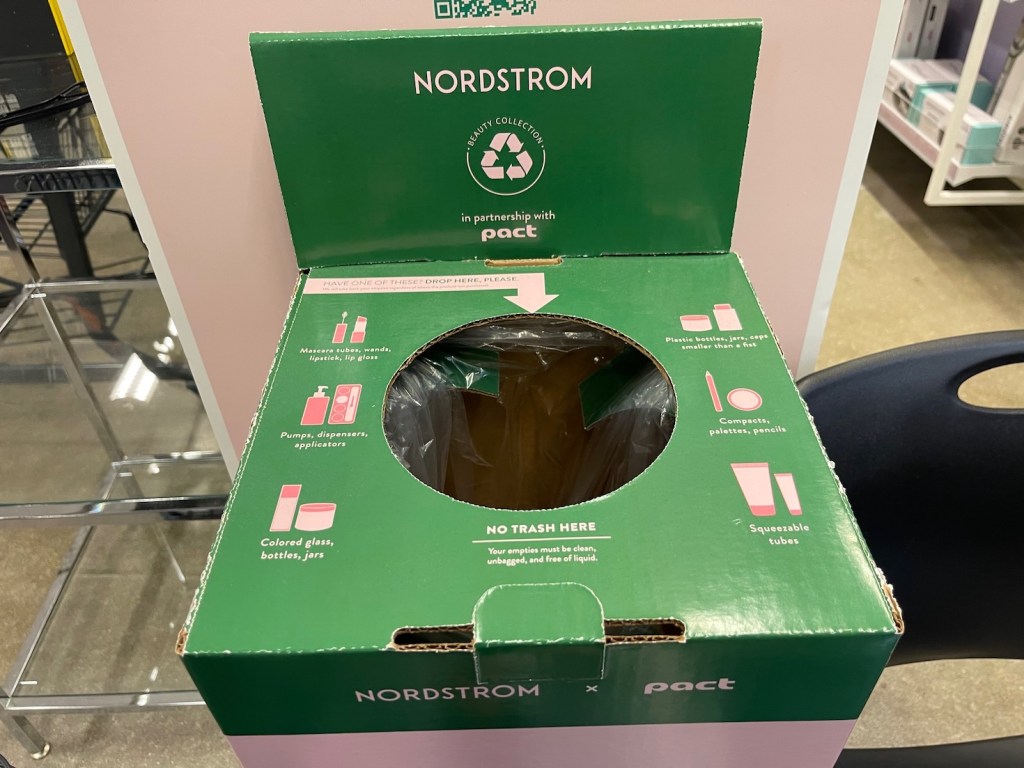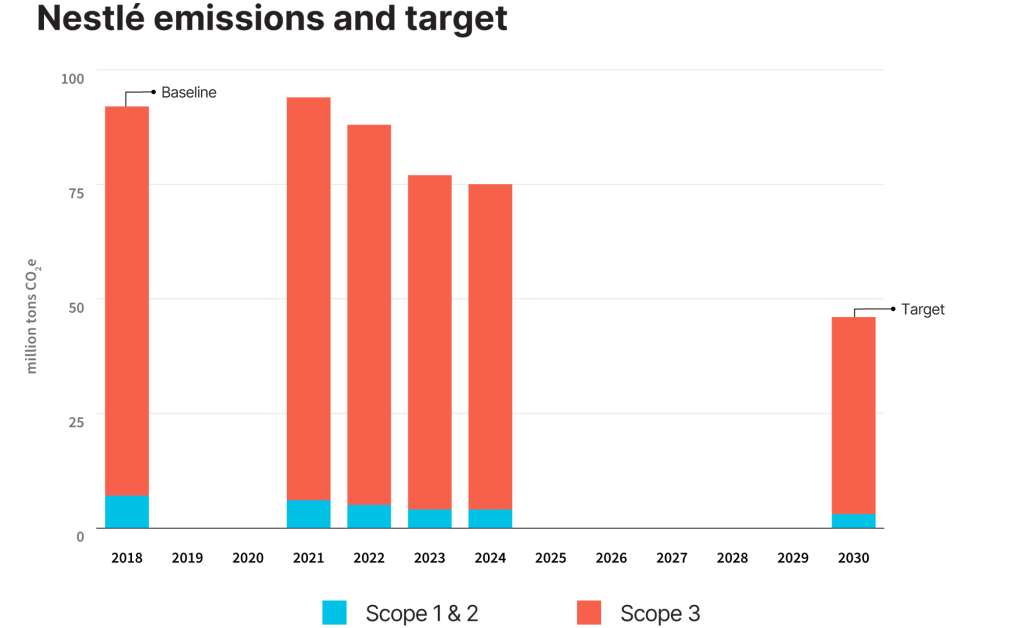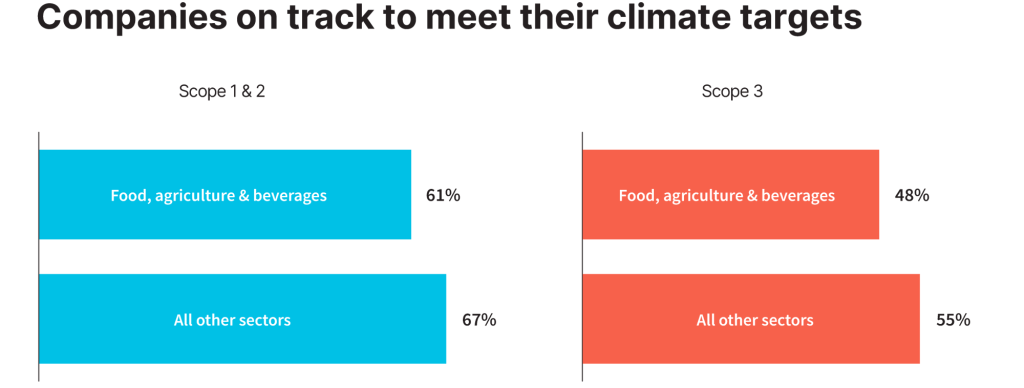Less than 10 percent of single-use plastic is recycled, most of it bottles and jugs. That rate is far lower — close to zero, in fact — for smaller bits and pieces of packaging such as bottle caps, straws and coffee pods.
In the cosmetics industry, for example, few of the 120 billion units of lotion pumps, mascara wands and other components made each year are recycled, according to the Pact Collective.
The San Francisco nonprofit has gathered 140 cosmetics makers and retailers — including Sephora, Ulta Beauty and L’Oréal — to attack small-format plastic waste. Pact maintains more than 3,300 bins for spent makeup jars, lids and applicators at North American stores including Nordstrom Rack and Saks Fifth Avenue.
To further its mission, the collective created something new from nearly 232 tons of detritus it has collected since 2022. Last year, as its collection volumes tripled, the organization transformed piles of plastics into a novel resin.
Credo Beauty, a founding member of Pact, then used that resin, called NewMatter, to create recyclable pumps for its moisturizer bottles. Those pumps usually blend several types of plastic with a metal coil, which prevents its recycling. Credo, however, used a single material — polypropylene — to make it easier to recycle later. Now that it has cracked this challenge, Pact seeks to encourage investors and infrastructure builders to support systems to collect, sort and recycle more small-format plastics.
“As the first beauty retailer to co-create a recycled resin from hard-to-recycle empties, we saw an opportunity to show circularity at work,” said Christina Ross, head of science and impact at Credo Beauty, a founding member of the Pact Collective. “This pump became a proof point and we can’t wait to see what brands do with the material next.”
Banding together
As international negotiations continue on a global plastics treaty, Pact isn’t the only corporate collaboration trying to keep packaging components out of landfills and incinerators. In February, the Consortium for Small Formats launched with backing from L’Oréal Groupe, Kraft Heinz and P&G. Individual brands’ efforts at circular packaging include refill programs from the likes of Kiehl’s and customer collection programs run by nonprofit Terracycle for Sephora and MAC.
Members of the U.S. Plastics Pact, meanwhile, have focused on sweeping benchmarks for reducing the proliferation of petroleum-based plastics, but their 2025 and 2030 deadlines are slipping out of reach.
“We are taking a different angle,” said Pact Collective Executive Director Carly Snider. “We’re collecting this material and then proving that it has value.” The initial heavy lift shows that certain cosmetics plastics can be integrated into municipal recycling systems, she added. “I’m hopeful that we can have this case study to show that this material has value, and therefore it’s worth the investment to your infrastructure for us to collect this material curbside.”

Pact’s June 26 impact report described how Credo’s custom pump, announced in September, fit into a busy year of scaling up recycling. Ninety-eight percent of the paper, glass and metal collected by Pact has been recycled. So has 70 percent of sorted, clean plastics.
Retail collection bins are core to Pact’s mission to grow as a household name for consumers, three-quarters of whom care about sustainable packaging, according to the nonprofit. Pact also collected 88,959 pounds of industrial waste of returns and expired or damaged goods last year.
The making of the NewMatter pump
“We used NewMatter resin for the pump because we wanted to show that beauty packaging can be made from beauty waste,” said Ross of Credo. “No one had ever made a high-functioning component from post-consumer beauty packaging before, so we knew the road wouldn’t be easy but also that it mattered.”
The journey to make the recycled pump started as Pact’s consumer-and-industrial packaging streams shipped to a plant in Lake Zurich, Illinois. After being sorted into 14 categories, the would-be trash was sent to mechanical recycling partners.
Next, the plastic recycler shredded and turned the waste into pellets.
The recycler required some 40,000 pounds of incoming material, which Pact’s collections alone did not reach. Therefore, Credo’s fully polypropylene pump blended 84 percent of material from Pact’s collection bins with ocean-bound plastic gathered by hand in Malaysia. The remaining 16 percent is virgin polypropylene. “It took a lot of work with them to figure out ways that we can get this material in there,” Snider said. “This is a really high value source of plastic.”
One pound of plastic waste stays out of landfills or oceans for every 38 pumps that Credo makes, according to Pact.
Next steps
Beyond the pump, Pact also turned recycled high-density polyethylene into soap dishes with Terrazzo-like flecks in them. “It’s really creating a way that customers can hold circularity in their hands,” Snider said. “It’s not this abstract thing.”
Credo is exploring where else it can use NewMatter resin, such as closures and other components that tend to be hard to recycle.
“Now that the infrastructure is set up to use take-backs on a more circular level, we need to continue to create a demand for post-consumer beauty-grade materials,” Ross said. That includes exploring how extended producer responsibility regulations cropping up in multiple states can help brands to advance innovative packaging, she added.
“You’re missing a huge piece of the puzzle here by just sending this to the landfill and not being able to sell it again,” Snider, of Pact, said.
The post How Credo Beauty created new plastic from tiny bits of packaging appeared first on Trellis.



